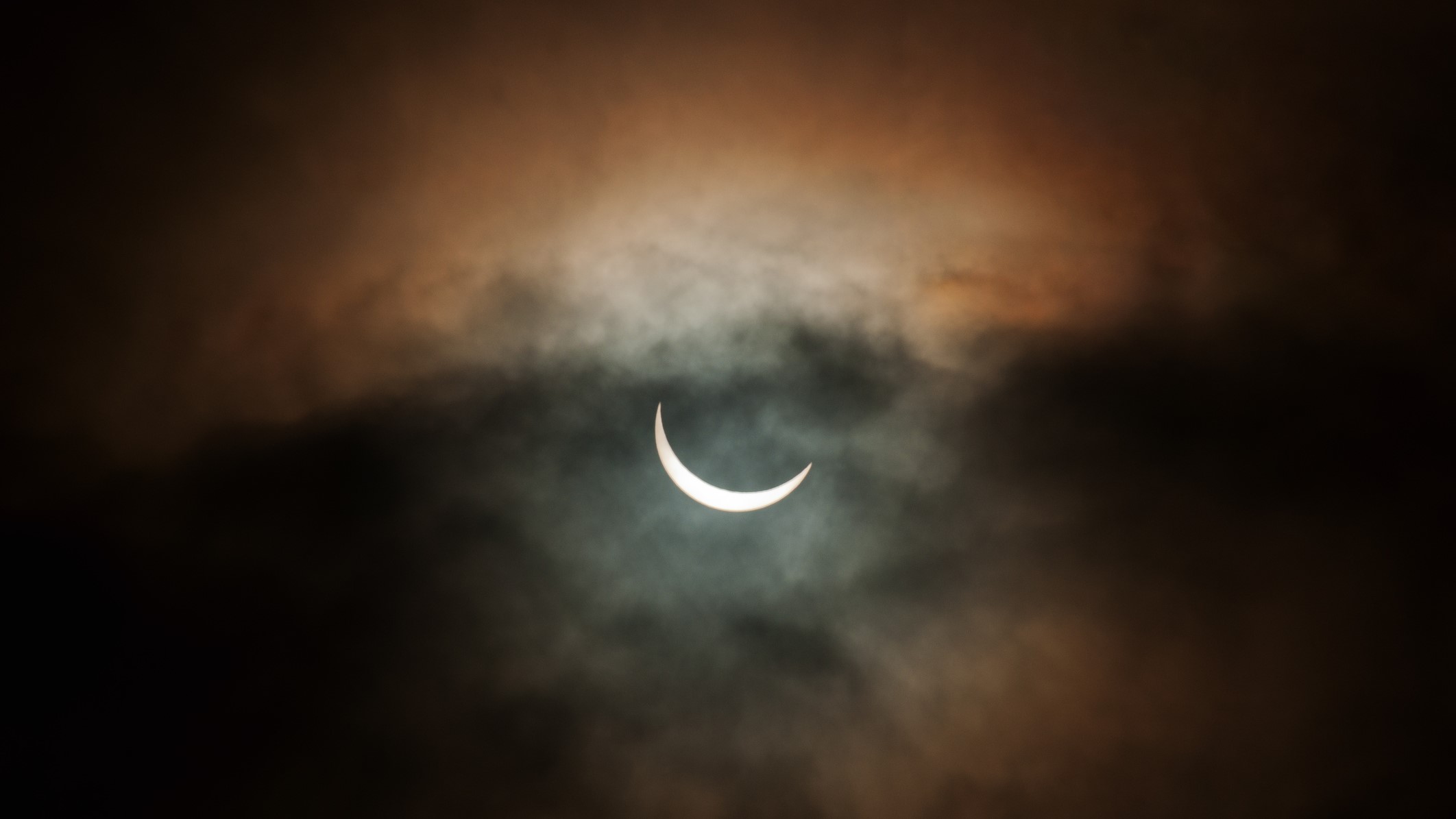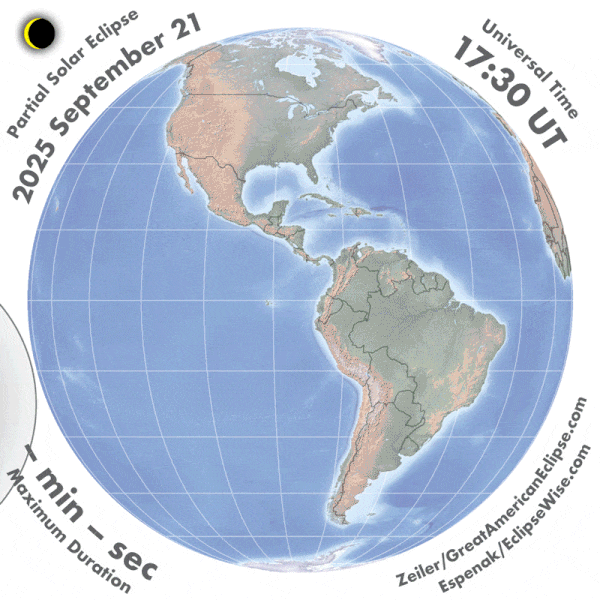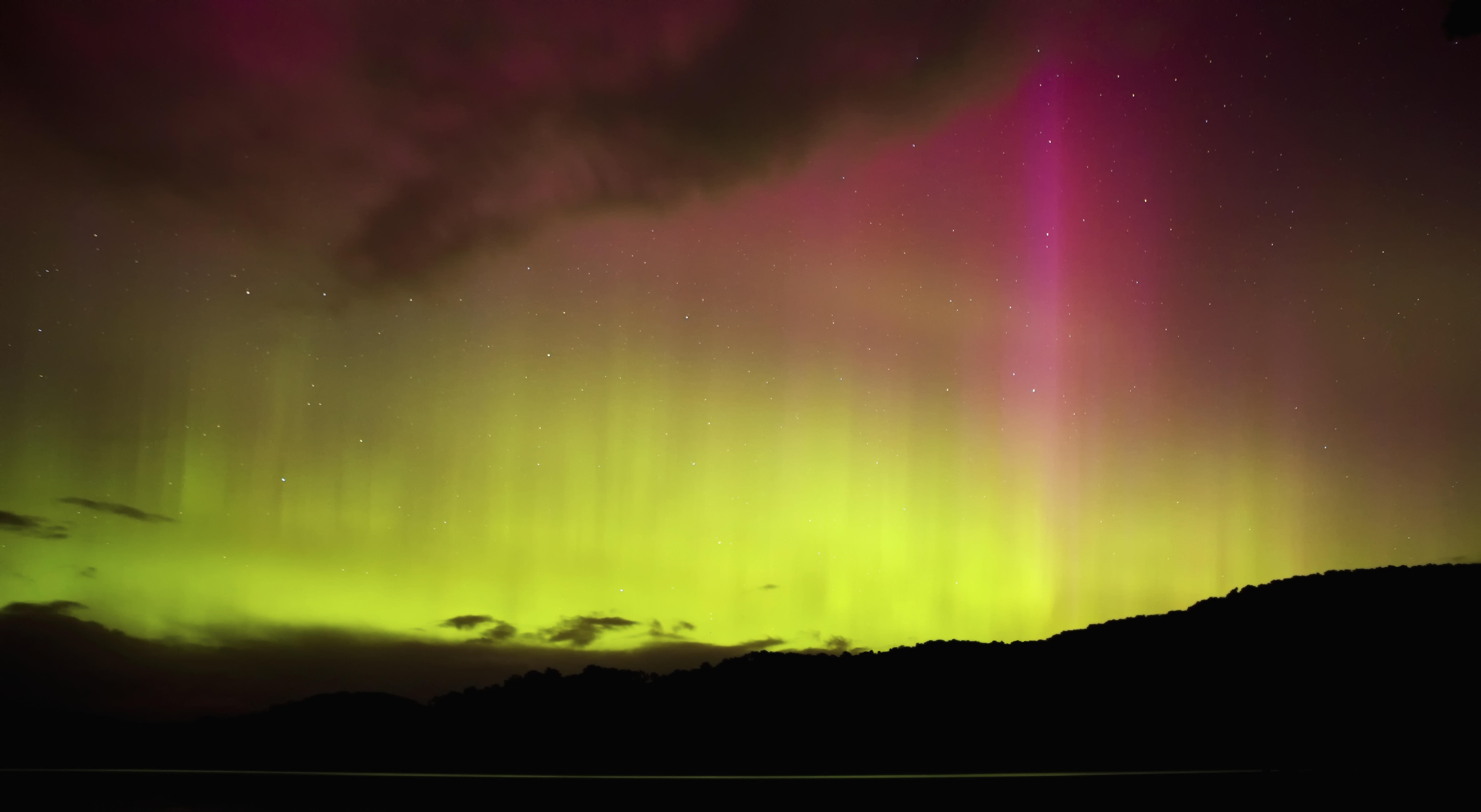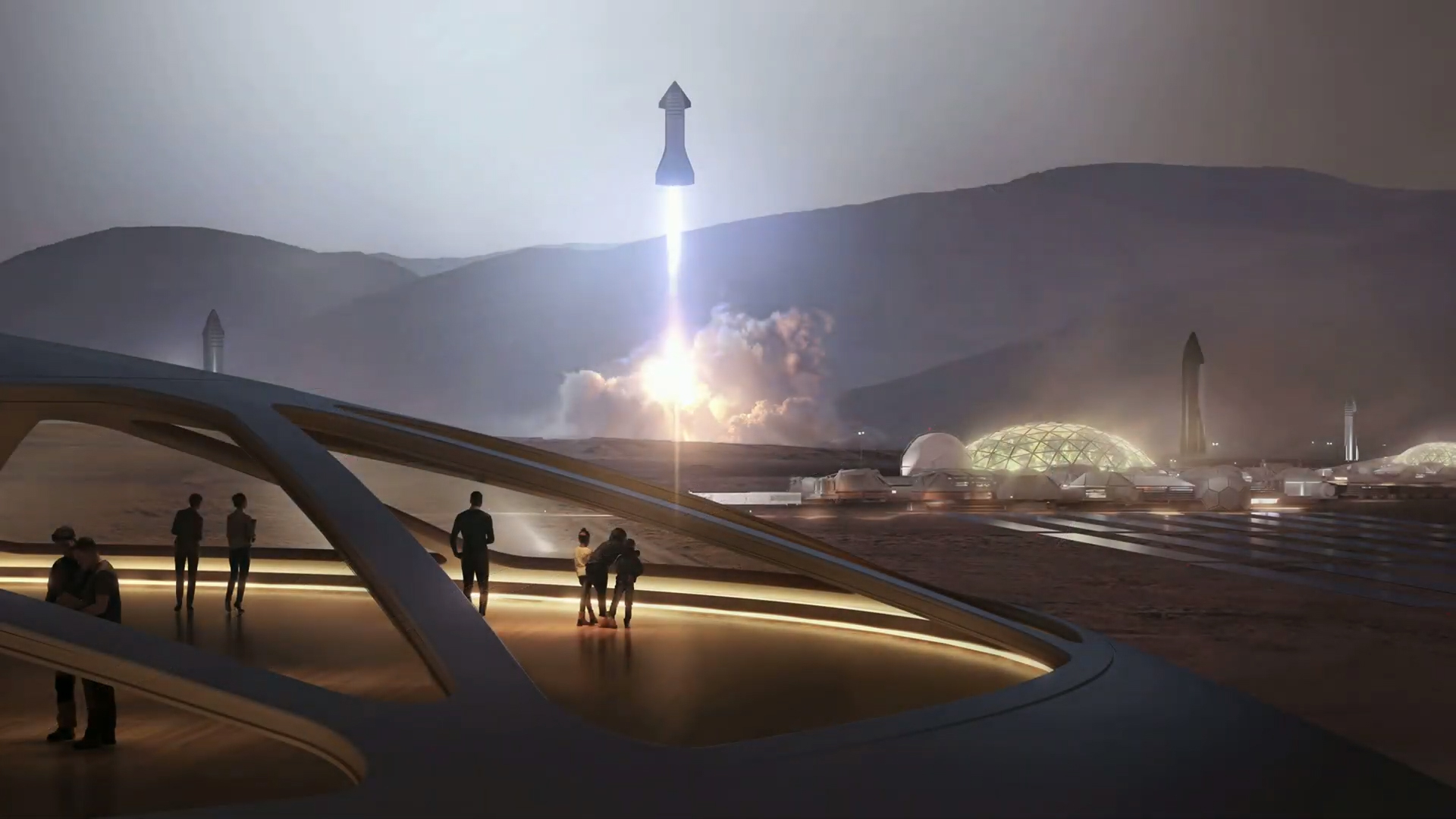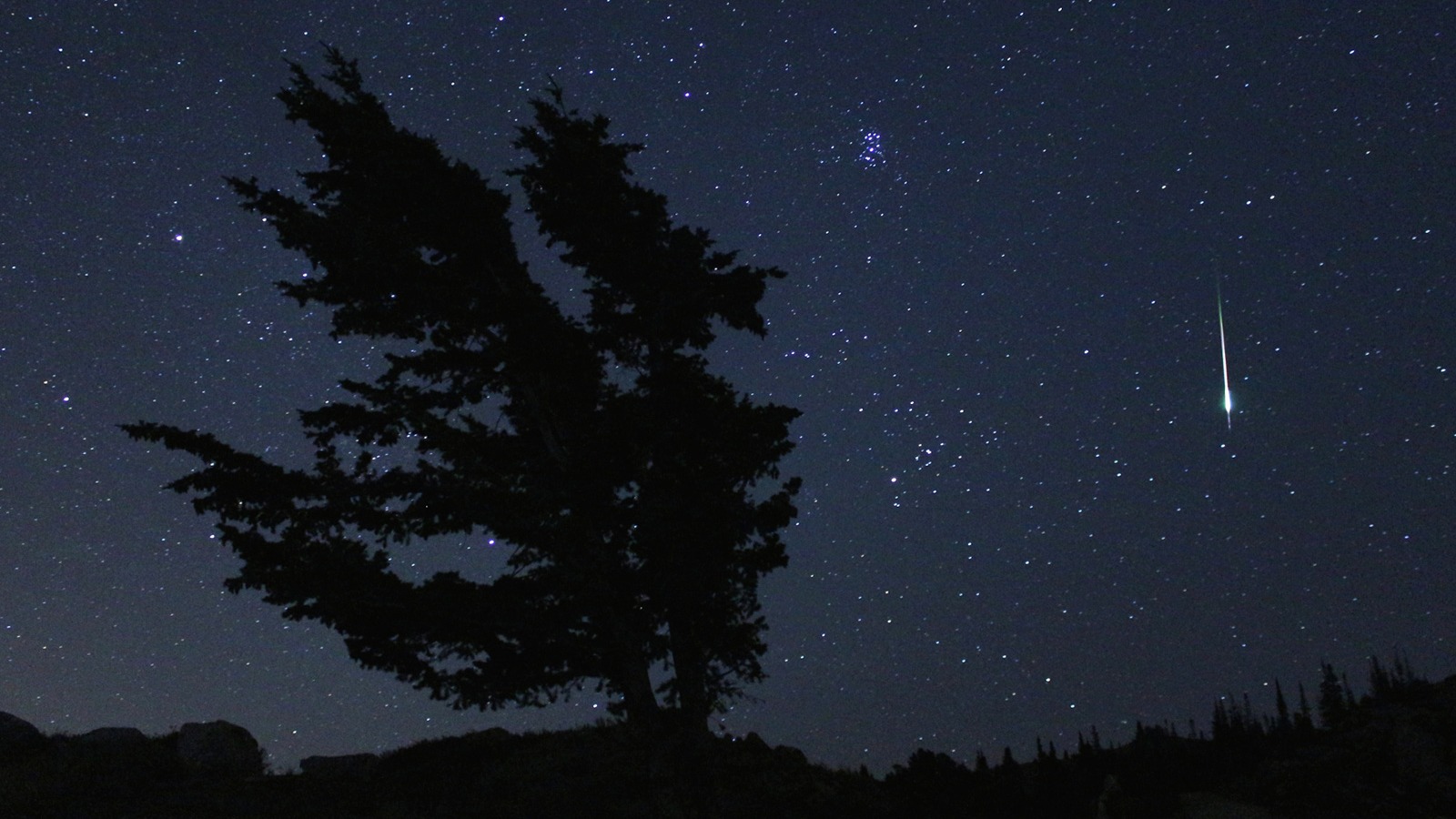On Sunday, Sept. 21, 2025, a deep partial solar eclipse will be visible from some remote areas of the Southern Hemisphere.
Despite being a partial solar eclipse, it will be relatively major. It will also occur a day before the equinox.
The Sept. 21 event will be the second and final solar eclipse of 2025. The maximum 80% partial eclipse will be visible from the Southern Ocean midway between New Zealand and a largely remote part of Antarctica, with the more frequently visited Antarctica Peninsula experiencing only a 12% partial eclipse, shortly before sunset.
When is the September 2025 partial solar eclipse?
As this interactive Google Map shows, as much as 86% of the sun will be blocked by the moon in an event lasting from 17:29 to 21:53 UTC (1:29 to 5:53 p.m. EDT) on Sunday, Sept. 21, 2025. According to Time and Date, 16.6 million people will be in the path of a partial solar eclipse, and 409,000 will see a 70% or deeper eclipse. Most will be in the southern part of New Zealand’s South Island.
During a partial solar eclipse, it is NEVER safe to look directly at the sun without solar eclipse glasses designed for solar viewing. Read our guide on how to observe the sun safely.
September 2025 partial solar eclipse path in Antarctica
The point of greatest eclipse — where 80% of the sun will be blocked by the moon — will occur in a remote part of the far South Pacific Ocean, south of New Zealand, and close to Antarctica. The closest landmasses to that point are the uninhabited Balleny Islands (owned by New Zealand), where a 78% partial solar eclipse will begin 10 minutes after sunrise. It’s a similar scenario for Zucchelli Station, an Italian research station (72%); and McMurdo Station (69%), a U.S. station on the southern tip of Ross Island and the largest community in Antarctica, with up to 1,500 people.
The nearby Ross Ice Shelf — the largest ice shelf in Antarctica — will see a 65% eclipse, which will decrease as you travel east toward the Antarctic Peninsula, where a 12% eclipse will occur just before sunset.
September 2025 partial solar eclipse path in New Zealand
From New Zealand, the eclipse will be underway during sunrise, making for dramatic views as a crescent sun appears on the horizon. It will be possible to observe a 58% to 73% eclipse, depending on the exact location. Stewart Island, to the south of New Zealand’s South Island, will see a 73% eclipse. Auckland, on the North Island, will experience a 60% eclipse.
The eclipse will occur toward the end of the southern lights (aurora australis) season. The South Island’s Aoraki Mackenzie International Dark Sky Reserve — the largest preserved dark sky in the world — will see a 70% eclipse.
September 2025 partial solar eclipse path in the South Pacific
Although only a small partial solar eclipse will be observable from the South Pacific, locations such as Fiji (27%), Tuvalu (9%), Tonga (32%), Samoa and American Samoa (17%), the Cook Islands (23%) and Tahiti in French Polynesia (8%) could all prove attractive to dedicated eclipse chasers.
After September 2025, when is the next partial solar eclipse?
Between 2026 and 2028, central solar eclipses — both total and annular — will dominate. Here are the dates and locations for upcoming partial solar eclipses, the next four of which will occur in 2029:
- Jan. 14, 2029: North America, Central America and Greenland
- June 12, 2029: Alaska, northern Canada, Iceland and northern Scandinavia
- July 11, 2029: Patagonia (Chile and Argentina) and the Antarctic Peninsula
- Dec. 5, 2029: Antarctica and far southern Patagonia (Chile and Argentina)
Additional resources
Want to look further ahead? You can find a concise summary of solar eclipses out to 2030 on NASA’s eclipse website. Read more about solar and lunar eclipses on EclipseWise.com, a website dedicated to eclipse predictions. See beautiful maps on eclipse cartographer Michael Zeiler’s GreatAmericanEclipse.com and interactive Google Maps on Xavier Jubier’s eclipse website. You can find climate and weather predictions by meteorologist Jay Anderson on eclipsophile.com.
Bibliography
- Bakich, M. and Zeiler, M. (2022). Atlas Of Solar Eclipses 2020-2045. https://www.greatamericaneclipse.com/books/atlas-of-solar-eclipses-2020-to-2045
- Jubier, X. (n.d.). Solar eclipses: Interactive Google Maps. Retrieved Oct. 31, from http://xjubier.free.fr/en/site_pages/SolarEclipsesGoogleMaps.html
- Time and Date. (n.d.). Eclipse Central. Retrieved Oct. 31, 2024, from https://www.timeanddate.com/eclipse/
- Cameron Smith, I. Partial Solar Eclipse of 21 Sep, 2025 AD. Retrieved Oct. 31, 2024, from https://moonblink.info/Eclipse/eclipse/2025_09_21.

